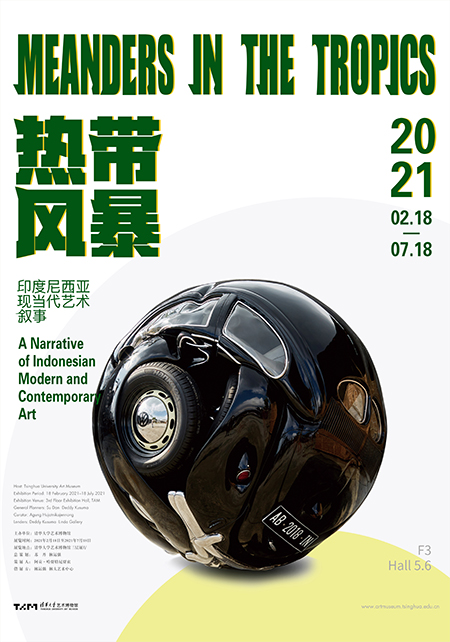Author: Agung HujatnikajennongSource: Tsinghua University Art MuseumPublished on: 2021-02-08

A tropical country with the largest population in Southeast Asia, Indonesia occupies a unique position in the re-pository of world’s cultures. In addition to the diversity of ethnic, linguistic and religious traditions that are rooted in the local cultures, its heterogeneity has resulted from the historical encounters with the great civilizations of the world. In gradual and radical ways, Indonesia has undergone through various phases of sociocultural chang-es since the early 20th century: from colonial modernity to globalization.
Meanders in the Tropics aims to display works that represent the development of Indonesian modern and con-temporary art. Underlining the diversity of aesthetic languages, this exhibition is composed of drawings, paint-ings, sculptures and video works that span nearly a hundred years, from 1930s up to today. The narrative thread is structured in twofold. Not only does it outline a history of artistic styles and themes developing in different periods, the exhibition also attempts to sketch out the art world’s formation by underlining the affiliations among artists, groups and schools. This curatorial outlook eventually shapes the exhibition in both chronology and to-pography of the field, placing the artists and their works in their unique positions in the twists and turns—the meanders—of the Indonesian art history. As a non-repetitive imprint of a time, artwork serves as a reminder of the circumstances that have passed, of those which is occurring today and those that will be approached by a society in the future.
The works in this exhibition are assembled into four large groups. The first section—Primal Frontier—is repre-sented by the works of forefront artists who pioneered a model of art collective commonly called sanggar (literal-ly means ‘studio’, or ‘guild’) in Java and Bali. Artists in this section have been already active since Indonesian pre-independence time, working together to present their works in group exhibitions, as well as creating opportu-nities for younger artists to study and start practicing modern art.
The second section—Around the Divide—consists of works by artists who first came to prominence through-out the late 1960s to 1980s, during the heyday of art academies. Most of them embarked on their respective careers as painter and lecturer in either Jakarta, Bandung or Yogyakarta (Jogja). Many discussions have always revolved around the divide between ‘abstract-formalist’ represented by Bandung school artists on the one side, vis-à-vis ‘the social-realists’ of Jogja on the other. But as the section demonstrates, the borderline has in fact never been that strict and consistent. Their works tend to diverge in themes and styles.
Going Downwards is a smaller section which consists of works from artists of the 1960s, who have greatly inspired their successive generation in their approach to portray social reality.
While the biggest cluster of works in the exhibition, Forking Paths, is composed of smaller subdivisions repre-senting diverse tendencies and artists positions. Indonesian arts entered a new phase after the 1998 Reform, with the loosening government censorship and increasing opportunities to participate more actively in the inter-national art circuit. This section presents works by protagonists who have emerged into what has been becom-ing an increasingly global art world.
All works in this exhibition have been mounted from a larger collection of Jakarta-based Indonesian collector Deddy Kusuma, who since the late 1980s has been nurturing his passion in arts and continued to preserve his support for the local art scene.